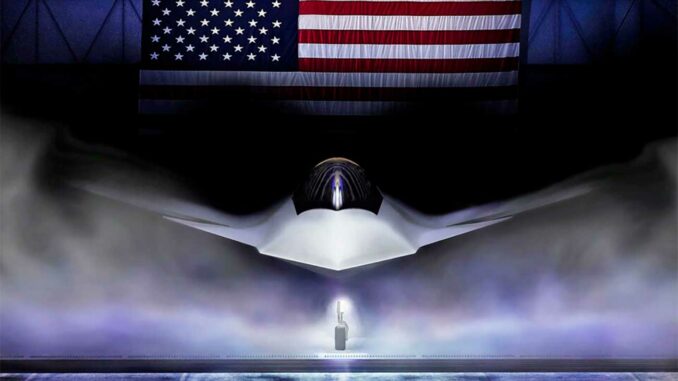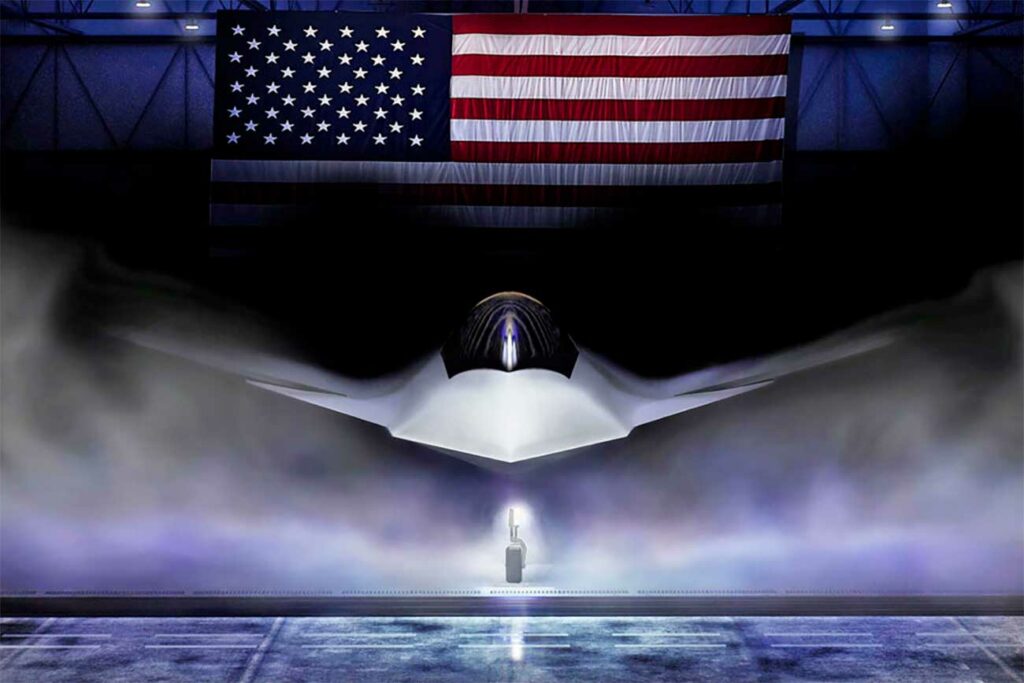
Boeing’s sixth-generation fighter, the F-47, promises rapid upgrades thanks to an open architecture, avoiding the mistakes of the F-35.
The F-47, developed by Boeing for the US Air Force, represents a major advance in military aviation. Designed as part of the Next Generation Air Dominance (NGAD) program, this sixth-generation fighter features an open and modular architecture, allowing for rapid technological upgrades independent of the original manufacturer. This approach aims to avoid the problems encountered with the F-35, including excessive dependence on Lockheed Martin for maintenance and updates. The F-47 is also designed to operate in tandem with autonomous drones, known as Collaborative Combat Aircraft (CCA), such as the YFQ-42A and YFQ-44A, thereby strengthening the US’s air superiority against adversaries such as China.
An open architecture for greater flexibility
The F-47 is based on a Government Reference Architecture (GRA), a technical framework defined by the US Air Force itself. This model guarantees the military complete control over the mission systems architecture, breaking with the contractual approach of the F-35, in which Lockheed Martin retained most of the rights to technical and software data. This situation led to major operational limitations, including the inability of the armed forces to carry out autonomous repairs or integrate new features without going through the manufacturer. By directly integrating the GRA into the F-47’s design phase, the US Air Force is ensuring technological sovereignty and the system’s ability to evolve continuously.
In concrete terms, this open architecture allows independent software updates to be carried out at a pace dictated by operational needs rather than industrial constraints. In addition, the use of standardized interfaces facilitates interoperability with subsystems developed by other suppliers, thereby reducing dependence on a single manufacturer. This translates into lower upgrade costs, faster innovation cycles, and greater adaptability to evolving technological threats.
Lessons learned from the F-35 program
The F-35 Joint Strike Fighter program, led by Lockheed Martin, has long been criticized for its centralized acquisition model and structural dependence on the prime contractor. One of the main flaws in this model is the lack of transfer of intellectual property rights over maintenance data to the US Department of Defense. This lock-in has limited the autonomy of the US Air Force, which has had to rely on Lockheed Martin to carry out repairs, integrate fixes, or improve the system, slowing down updates and significantly increasing maintenance costs.
According to the Government Accountability Office, the total cost of the program over its lifetime is estimated at $1.58 trillion (approximately €1.46 trillion), an amount considered excessive by many observers. In light of these findings, the US Air Force deliberately chose a different approach with the F-47: by ensuring full ownership of technical data and establishing an open architecture, it can now freely choose its industrial partners and increase its sources of supply and innovation, thereby limiting the risks of technological monopoly and budgetary overspending.

Integration of collaborative drones
The F-47 was designed from the outset to operate in a network with autonomous combat drones, known as Collaborative Combat Aircraft (CCA). This new generation of aircraft, currently under development with prototypes such as the YFQ-42A from General Atomics and the YFQ-44A from Anduril Industries, is based on a modular and interoperable architecture aligned with that of the F-47. These drones are designed to perform a variety of missions: escort, electronic warfare, intelligence gathering, enemy air defense suppression, and even targeted strikes. Thanks to onboard artificial intelligence, they can operate semi-autonomously while remaining under the supervision of human pilots.
Produced at a unit cost well below that of manned fighters—estimated at between $15 million and $25 million depending on their capabilities—these drones offer a tactical attrition solution. They enable the US Air Force to project increased firepower while reducing risks to crews. Integrated into a shared mission network, the CCAs and the F-47 exchange data in real time, enabling synchronized software updates and continuous improvement of overall system performance. This synergy makes the whole system more agile, more scalable, and above all more resilient to the complex threats of modern air combat.
Technical specifications of the F-47
The F-47, a sixth-generation fighter developed by Boeing, incorporates significant improvements in range, stealth, and modularity. Its range exceeds 1,852 kilometers, representing a 70% increase over the F-22 Raptor, one of the most capable aircraft currently in service. This extended capability broadens the spectrum of missions that can be performed without in-flight refueling, a strategic advantage in high-intensity, long-range conflict.
The F-47 can reach a maximum speed of over Mach 2, or approximately 2,450 km/h, while maintaining a low radar signature, thanks to a stealth-optimized airframe and the use of new-generation radar-absorbing coatings. Designed from the outset to incorporate an open architecture, it also features fully modular onboard systems, facilitating maintenance and software updates.
The US Air Force plans to order at least 185 units, with operational service expected between 2025 and 2029. Although limited, this volume is intended to complement CCA drones, with the F-47 set to play a tactical coordination role in distributed combat configurations.
Strategic and industrial implications
The award of the F-47 program to Boeing, for an estimated $20 billion (approximately €18.5 billion), is a landmark decision for the future of US combat aviation. On the industrial front, it reflects a clear desire to rebalance the distribution of major defense contracts, which until now have been largely dominated by Lockheed Martin with the F-35. This choice strengthens Boeing’s position in the fighter jet sector, where the company had not won a major contract since the F-15EX. It also ensures diversification of industrial skills within the US military-industrial complex by promoting more sustained technological and economic competition.
From a strategic point of view, the F-47 represents a break with doctrine. Designed to operate within a distributed system, interconnected with autonomous drones and upgradeable via rapid updates, it meets the requirements of high-intensity confrontation with powers such as China and Russia. By promoting the US Air Force’s mastery of critical technologies, the program strengthens US operational sovereignty and reduces the risks associated with dependence on a single supplier. This model could herald a new standard in future weapons programs.
Future prospects
The development of the F-47 and its integration with CCAs represents a major evolution in air defense system design. This modular and open approach could serve as a model for future weapons programs, promoting greater flexibility, cost reduction, and increased responsiveness to evolving threats.
War Wings Daily is an independant magazine.